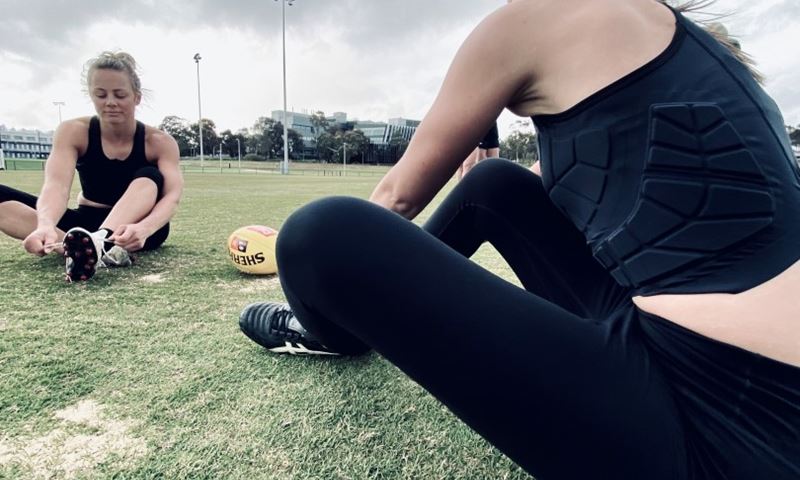The message to exercise has been pushed on our TV screens and billboards for years. While marketing campaigns and exercise fads come and go, the underlying principle that exercise is essential for good health remains the same. But how do we know if we’re doing enough?
 The best place to start is with Australia’s Physical Activity and Sedentary Behaviour Guidelines. These guidelines are based on the latest research and give precise instructions on what type, how hard and how much you should exercise to prevent disease and illness from setting in. The guidelines are written for the general population, so experts recommend that if you have a specific medical condition you should seek professional advice – your GP is a good place to start.
The best place to start is with Australia’s Physical Activity and Sedentary Behaviour Guidelines. These guidelines are based on the latest research and give precise instructions on what type, how hard and how much you should exercise to prevent disease and illness from setting in. The guidelines are written for the general population, so experts recommend that if you have a specific medical condition you should seek professional advice – your GP is a good place to start.
Let’s take a look at the guidelines and explore the top five ways to tell if you’re exercising enough.
1. You’re active most days of the week
When you look back at your week, you’ve been active on at least five out of seven days. That might be activities such as walking the dog, participating in an exercise class, riding a bike, dancing, doing yoga in your lounge room or mowing the lawn.
Don’t think you’re doing enough?
Think about your week ahead and how you can schedule in five occasions to move. Can you make the catch up with your friend a walk instead of coffee? Can you park your car a little further from your destination and walk the rest? Can you make one of your meetings at work a walking meeting?
2. The exercise you do requires a bit of effort
It’s time to take a reality check – are you really putting in a bit of effort when you exercise or does your gym gear rarely see sweat? The greater the intensity of exercise, the more preventative health benefits you’ll secure. Making sure you work at a moderate level of intensity, which requires some effort (like walking at a brisk pace) or ramping it up to a vigorous ‘huff and puff’ level (like jogging) will mean better results in the long-term.
Intensity is not a word you associate with exercise?
If the 5km jog you’ve been doing on flat ground for the last two years is becoming easy and mundane – it’s time to change your route to include a hill or a fast sprint. You could even spice up your walk with an occasional slow jog to raise the intensity.
3. You’re active for at least 2.5 hours each week
Continuing on from the theme of being active for most days of the week, when you add up the total time you are active does it come to a minimum of 2.5 hours of moderate intensity activity (like walking at a brisk pace) or a minimum 1.25 hours vigorous intensity (like jogging). The best thing of all is if you can accumulate it across your week. So the 15-minute walk you do to and from your car each day, adds onto the 20-minute dance in the lounge room with the kids, which adds onto your 60-minute Pilates class, and so on.
 Not hitting the minute mark?
Not hitting the minute mark?
The guidelines are clear – doing any physical activity is better than nothing. If you’re a beginner and 2.5 hours seems impossible, start small with a walk around the block, or even get off the couch and walk around every ad break while you’re watching TV. Smart phone apps can help keep you motivated and track your activity – Vichealth has reviewed over 300 healthy living apps to help you find the one that’s right for you. Use a fitness tracker like a Fitbit or Garmin to help you keep track of your total exercise time and intensity.
4. You try not to sit still for long periods of time.
If you work in a sedentary job, meaning you spend most of your day sitting down then you’re at greater risk of poor health outcomes. Even if you’re a marathon runner, prolonged sitting can still affect your health. Getting up and moving regularly helps to move muscles and increase blood flow, which in turn helps to clear the blood of glucose and fat and increase oxygen to the brain.
If your chair is moulded into your shape:
There are many opportunities to sit in our daily lives. The key is to find opportunities to move. Setting a timer for every 30 minutes as a reminder to get off your chair is a great way to start. Fitness trackers and apps like Rise and Recharge allow you to set up regular reminders to move and cheer you on when you reach your daily goal. Initiatives like Move More Sit Less give you the support and motivation you might need.
5. Some of your exercise opportunities are building muscle strength.
If you are going to the gym a couple of days a week, you’ll be meeting a lot of the guidelines with ease. Regularly moving your muscles against a resistance or weight helps not only helps to improve muscle strength, but is also linked to improved bone strength and reduced risk of falls and injury. It also helps to prevent and control things like heart disease and type 2 diabetes.
It’s time to build the biceps:
While hitting the gym is a great way to build strength, doing body weight exercises at home is also a good starting point. Push ups, squats and lunges are great for building strength. Adding hand weights or using a resistance band is an easy way to progress.
Remember, any activity is better than none; so as you pound the pavements or vigorously vacuum the carpet or mow the lawns, you can think to yourself “at least I’m not on the couch”. Take the time today and ask yourself what you can do to move more and sit less.



